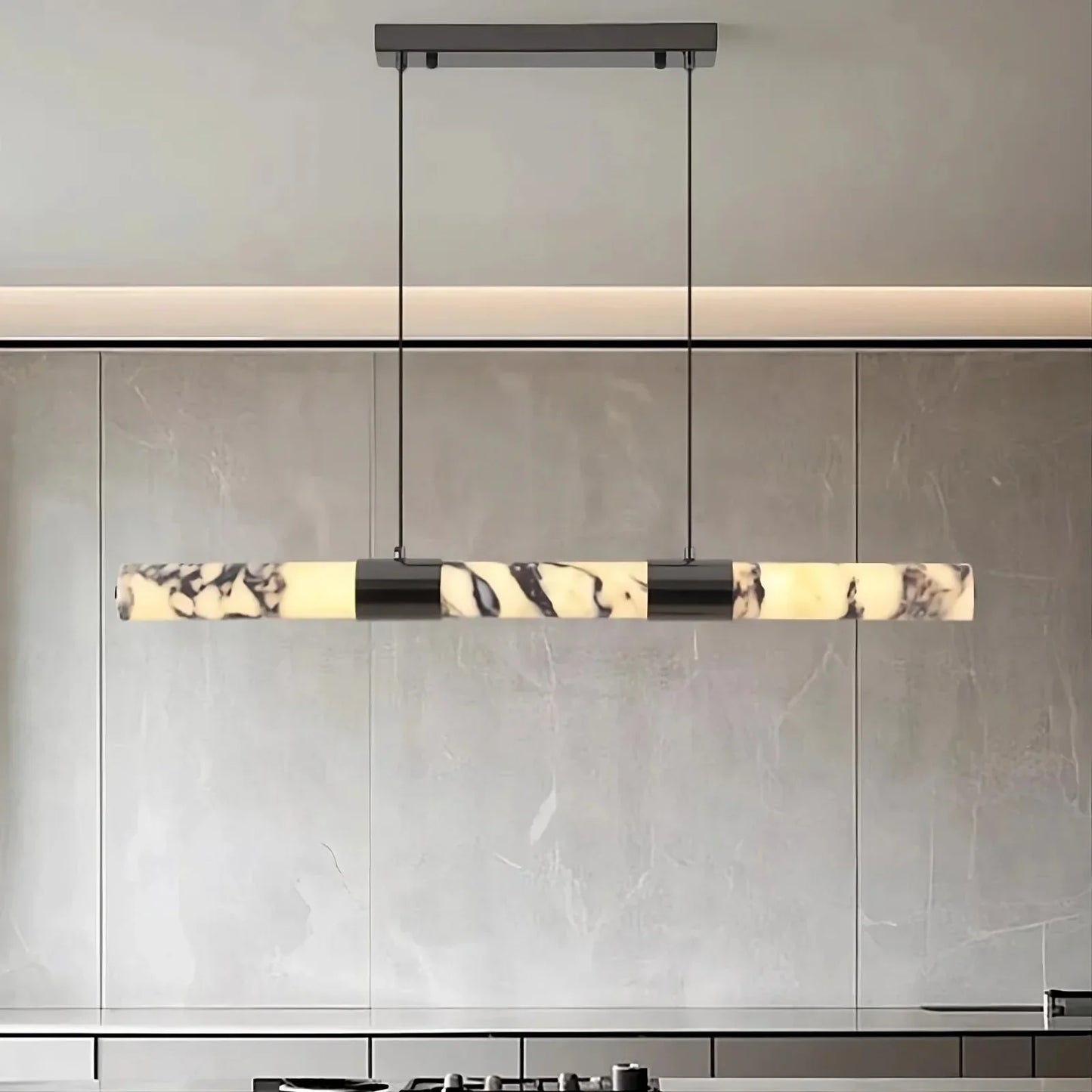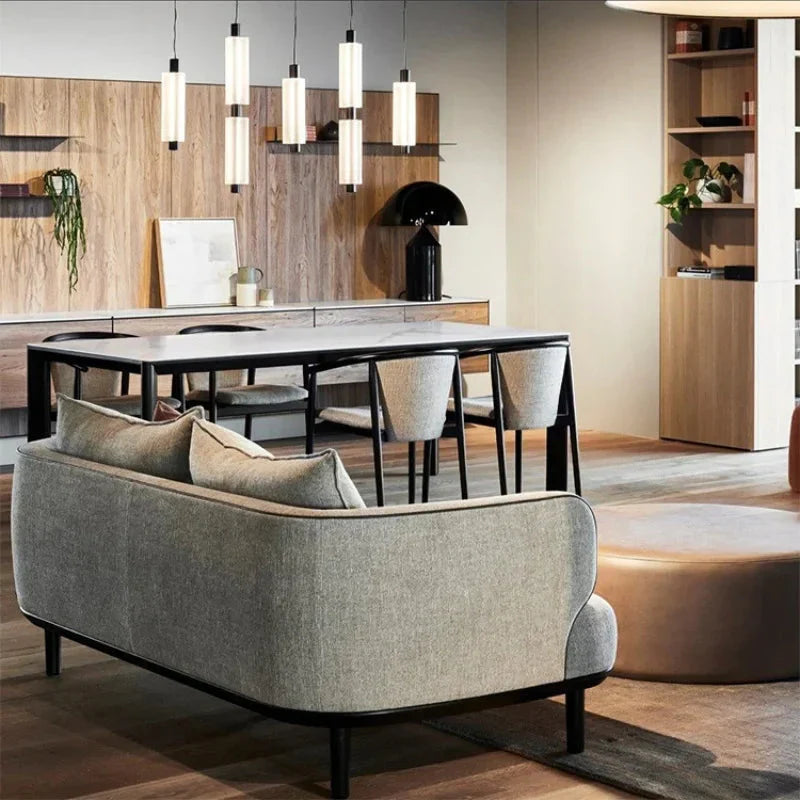Understanding the Importance of Dining Room Ceiling Lights
Dining room ceiling lights play a crucial role in creating an inviting and functional space. Their importance can be delineated as follows:
- Ambiance Enhancement: Ceiling lights define the mood. By using various designs and brightness levels, they contribute to a warm and welcoming atmosphere.
- Aesthetic Appeal: They act as a focal point, accentuating the room's theme and style. Select designs that complement furniture and wall colors for a cohesive look.
- Functionality: Proper lighting ensures enjoyable dining by providing adequate illumination for meals, conversations, and activities.
- Energy Efficiency: Contemporary options offer energy-efficient solutions that reduce electricity consumption while maintaining high luminosity.
Choosing the right ceiling lights elevates the dining experience significantly.
Types of Dining Room Ceiling Lights to Consider
Choosing the right ceiling light can enhance the dining room ambiance. Consider the following types:
- Chandeliers: Offer timeless elegance and ideally fit formal dining spaces. Available in various styles, including crystal and modern designs.
- Pendant Lights: Deliver focused illumination and come in a range of shapes and materials. Perfect for creating a cozy atmosphere.
- Flush Mounts: Suited for rooms with lower ceilings, providing a streamlined look without sacrificing light quality.
- Recessed Lighting: Allows for unobtrusive lighting while adding flexibility and a modern touch to dining environments.
- Track Lighting: Provides versatile and adjustable light sources, ideal for highlighting decor elements.
Choosing the Right Size and Scale for Your Space
Selecting the appropriate size and scale of ceiling lights is vital for creating a balanced dining room ambiance. Consider the following factors:
- Room Dimensions: A larger room requires a more substantial fixture; a small room benefits from a more modest light.
- Ceiling Height: High ceilings can accommodate larger lights or chandeliers, while low ceilings necessitate more minimal designs.
- Table Size: The fixture should be approximately half to two-thirds the width of the dining table.
- Fixture Shape: Round tables harmonize with circular lights; rectangular tables align better with linear designs.
A well-chosen light fixture should complement the room without overwhelming the existing décor and function.
Exploring Different Styles to Match Your Decor
When selecting dining room ceiling lights, consider diverse styles to ensure harmony with existing decor. Traditional options, like chandeliers, exude elegance with intricate designs and exquisite finishes, perfect for formal settings.
Contemporary styles offer sleek lines and minimalistic aesthetics, emphasizing functionality and simplicity.
For rustic or farmhouse themes, explore fixtures made from natural materials such as wood or wrought iron. These add a warm, inviting atmosphere.
Industrial designs incorporate raw, edgy elements like exposed bulbs and metal frameworks, creating a modern, utilitarian feel.
Incorporate vintage-inspired pieces for a unique, eclectic touch.
Consider the room's color scheme and material choices when selecting fixtures to maintain cohesive design.
Energy Efficiency and Lighting Technology
When selecting ceiling lights for a dining room, energy efficiency and technology are essential considerations. Modern advancements have enhanced lighting options, providing both functionality and style. Consumers can reap several benefits by focusing on these aspects:
- LED Lighting: Offers longevity and consumes less electricity compared to traditional bulbs, resulting in lower energy bills.
- Smart Lighting Systems: Allows remote control of brightness and color, and can be programmed to suit any dining ambiance.
- Dimmable Features: Provides flexibility in adjusting light intensity, contributing to mood and energy savings.
- Energy Star Certification: Ensures the fixture meets strict efficiency guidelines, reducing environmental impact and operational costs.
Lighting Design Tips for Ambience and Functionality
Optimizing dining room lighting involves balancing aesthetic appeal with practical illumination. A layered lighting strategy effectively achieves this.
- Assess the Room's Features: Consider architectural elements and focal points.
- Choose Appropriate Fixtures: Chandeliers and pendant lights add elegance; recessed lights offer subtle illumination.
- Control Light Levels: Install dimmers for adjustable brightness, catering to various occasions.
- Select the Right Bulb Type: LED bulbs provide energy efficiency and variable color temperatures.
- Plan Fixture Placement: Ensure even distribution, avoiding shadows.
- Incorporate Accent Lighting: Highlight art or décor with direction-specific lights for enhanced visual interest.
How to Position Your Dining Room Ceiling Lights
When positioning dining room ceiling lights, several factors must be considered to achieve optimal functionality and ambiance.
- Height: Suspend fixtures 30-36 inches above the table for adequate illumination without overpowering the space.
- Size and Proportion: Choose fixtures proportional to the table size. A general rule is the fixture's diameter should be roughly half the table's width.
- Center Alignment: Align the fixture with the center of the table, ensuring even distribution of light across the surface.
- Multiple Fixtures: For elongated tables, consider using multiple fixtures evenly spaced to cover the entire dining area.
- Room Aesthetics: Ensure the lighting style complements existing décor, maintaining harmony within the space.
Understanding Light Bulbs and Color Temperatures
Grasping the essentials of light bulbs and color temperatures profoundly impacts the dining room's ambiance. Lighting choices range from incandescent, LED to halogen, each offering distinct benefits. Understanding color temperatures, measured in Kelvin (K), aids in selecting the perfect light for dining spaces.
Light temperature affects mood and function:
- Warm White (2700K-3000K): Ideal for cozy, intimate settings.
- Cool White (4000K-4500K): Creates an energetic, welcoming feel.
- Daylight (5000K-6500K): Mimics natural light, enhancing visibility.
Consider energy efficiency and longevity. LEDs are superior, with diverse styles and colors. Thoughtful choice of light bulbs and color temperatures transforms and elevates dining room aesthetics.
Installation Process: DIY or Professional Help?
Selecting the right installation approach can impact the overall success of dining room ceiling lights.
DIY Approach
- Cost-Effective: Eliminates labor costs.
- Flexibility: Freedom to work at your own pace.
- Satisfaction: Personal accomplishment upon successful installation.
Considerations for DIY
The individual must possess basic electrical skills to ensure safety.
Professional Approach
- Expertise: Experienced handling ensures safety and precision.
- Efficiency: Saves time, with fewer chances of errors.
When to Consider Professionals
- Complex Wiring: Involves intricate or outdated electrical systems.
- Large Fixtures: Requires specialized tools or procedures.
- Building Codes: Adherence to local regulations is necessary.
Evaluating these factors helps decide between DIY or professional installation, making it integral to achieving optimal lighting aesthetics.
Maintenance and Care for Long-lasting Lighting
Proper maintenance and care are essential for preserving dining room ceiling lights. Regular cleaning is vital to remove dust and debris that may accumulate over time. Dusting can be done using a microfiber cloth or a gentle brush attachment on a vacuum cleaner. Ensure light bulbs are checked periodically for signs of wear or malfunction.
Key Maintenance Tips:
- Regular Dusting: Prevent dust build-up by dusting at least once a month.
- Bulb Inspection: Replace burnt-out or flickering bulbs promptly.
- Fixture Check: Tighten loose screws or fixtures to prevent mishaps.
- Professional Cleaning: Consider a professional cleaning if intricacies are challenging to reach.
Regular maintenance ensures longevity and optimal lighting performance.
Proper upkeep ensures dining room lighting remains both functional and stylish.
Ideas for Integrating Ceiling Lights with Other Lighting
Integrating ceiling lights with other lighting solutions can enhance a dining room's ambiance and functionality. Here are some professional suggestions:
- Layered Lighting Approach: Combine ceiling lights with wall sconces and table lamps to provide versatile lighting layers. This method ensures adjustable light based on mood and occasion.
- Accent Lighting: Use spotlights or LED strips to highlight artwork or architectural features. This adds depth and personalizes the dining space.
- Dimmers for Flexibility: Install dimmers for ceiling lights to easily transition from bright, lively gatherings to intimate dinner settings.
- Complementary Styles: Choose fixtures that complement the ceiling lights, maintaining a cohesive design and enhancing the room’s aesthetic.
Budgeting for Your Dining Room Ceiling Light Project
Creating a budget for a dining room ceiling light project involves several considerations. It is important to start by assessing the overall scope of the project and identifying any constraints. Key elements to consider include:
- Determine Costs: Factor in the price of the light fixture itself, which can vary widely. High-end designs may require more significant investments.
- Installation Fees: Hiring a professional to install the light ensures safety and compliance with electrical standards. Obtain quotes from local electricians.
- Additional Materials: Consider the need for supplementary materials, such as mounting hardware or new wiring.
Researching various options can help align the project's scope with available funds, ensuring a stylish and functional result.
Inspiration Gallery: Dining Room Lighting Transformations
Discover imaginative ways to enhance dining areas with inspiring lighting transformations. This gallery showcases diverse designs that allow interior decorators and homeowners to develop extraordinary spaces.
- Chandeliers: Explore sophisticated fixtures that add opulence and illuminate spaces with elegance.
- Pendant Lights: Gain insight into versatile styles offering both contemporary and traditional aesthetics.
- Recessed Lighting: Consider discreet solutions enhancing ambiance and highlighting design elements.
Take notes from professionals who use lighting to elevate dining room experiences. Quotes from renowned designers reveal, “Lighting is the visual backbone of interior design; it sets the mood and defines the space.” Witness how varied techniques breathe new life into dining areas.
Common Mistakes to Avoid When Selecting Ceiling Lights
- Ignoring Room Proportions: It is crucial to consider the room's dimensions. A light fixture that is too large may overwhelm the space, while one that is too small could be underwhelming.
- Overlooking Light Layering: Relying solely on one type of lighting neglects the importance of combining ambient, task, and accent lighting for a balanced look.
- Disregarding Ceiling Height: Ceiling height impacts the choice of fixtures, as low ceilings require flush mounts, while higher ceilings benefit from chandeliers or pendant lights.
- Neglecting Energy Efficiency: Choosing lighting purely for aesthetics without considering energy-efficient options can result in increased energy bills.
- Forgetting Style Consistency: Light fixtures should complement the dining room decor and match the overall aesthetic of the home.
Final Thoughts: Elevate Your Dining Experience with the Perfect Light
Lighting plays a pivotal role in transforming a dining space. Choosing the right ceiling light can elevate a room’s ambiance, functionality, and aesthetics. Key elements to consider:
- Style Alignment: Ensure the light fixture complements your dining room décor. Consider modern, traditional, or eclectic designs to match your theme.
- Size Appropriateness: A fixture too large or small can disrupt the harmony of the space. Generally, the diameter of a chandelier should be around half the table width.
- Brightness Control: Dimmers offer flexibility, allowing you to adjust the mood from intimate dining to vibrant gatherings.
- Installation Positioning: Center light fixtures above the table for optimal illumination and aesthetic balance.
Careful consideration of these elements can transform dining into an unforgettable experience.





